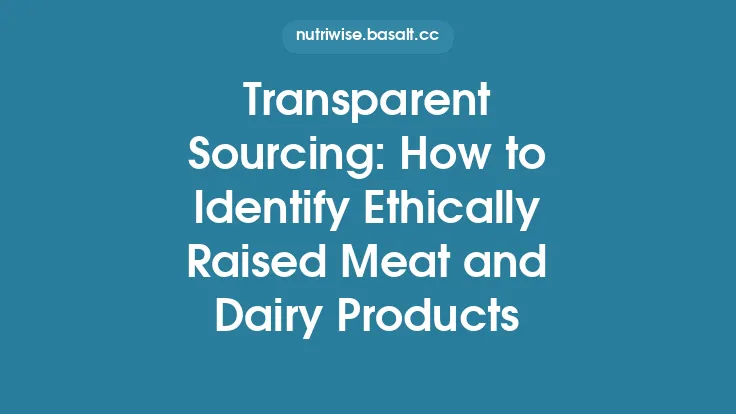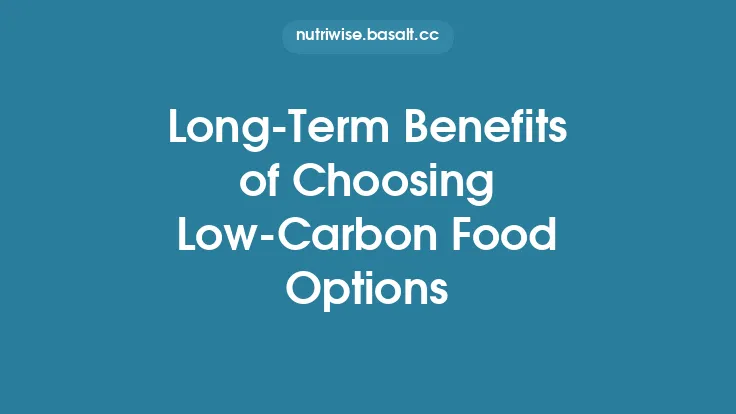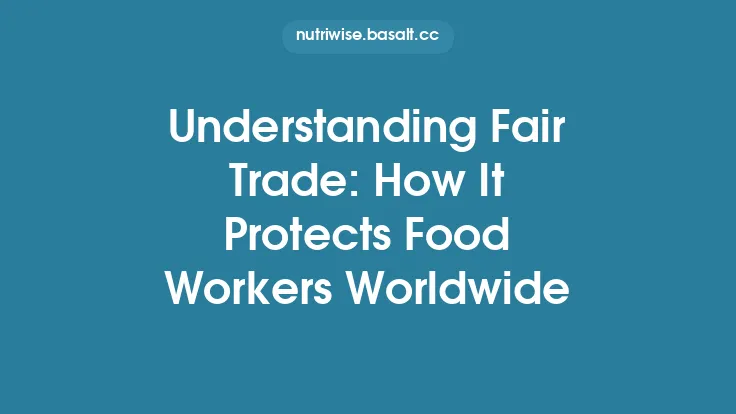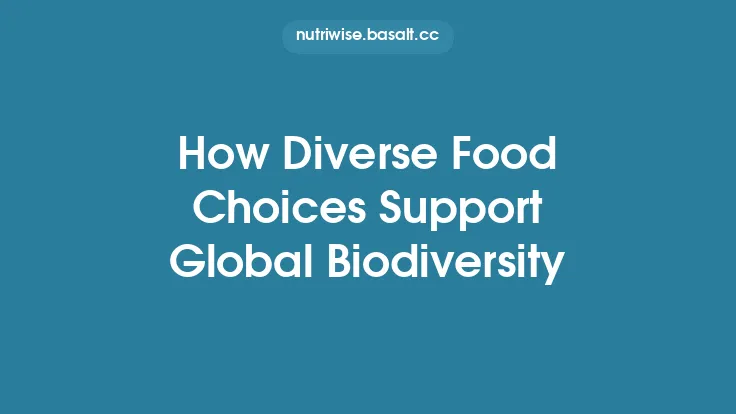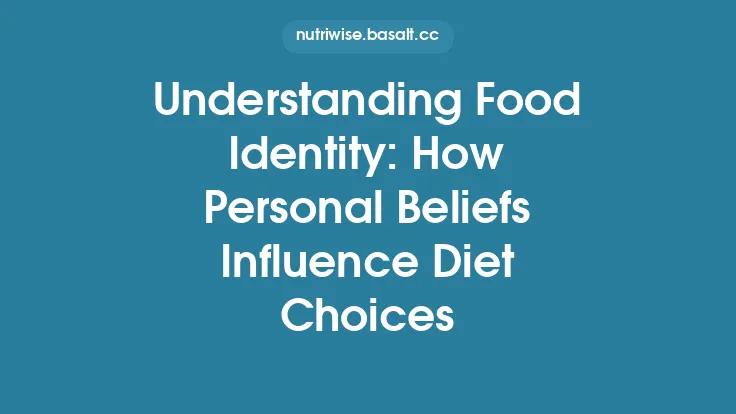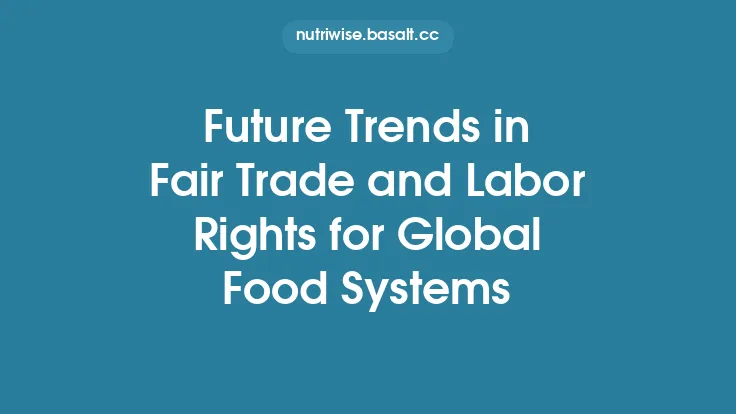Transparent supply chains have become a cornerstone of modern ethical food consumption. By illuminating every step—from farm to fork—visibility empowers shoppers, producers, and policymakers to make decisions that align with values such as fairness, environmental stewardship, and social responsibility. This article explores the mechanisms, standards, and practical implications of supply‑chain transparency, showing how it underpins ethical food choices without re‑hashing the broader history of fair‑trade certification or the specific stories of individual initiatives.
The Foundations of Supply Chain Transparency
At its core, transparency means that reliable, verifiable information about a product’s journey is accessible to all relevant stakeholders. In the food sector, this typically includes:
| Element | What It Reveals | Why It Matters |
|---|---|---|
| Origin of Raw Materials | Geographic location, farm type, and cultivation practices | Confirms compliance with environmental standards and labor norms |
| Processing Steps | Facilities used, methods applied, and any additives | Helps assess food safety, nutritional integrity, and ethical processing |
| Logistics & Distribution | Transportation modes, storage conditions, and carbon footprint | Links product carbon intensity to consumer carbon‑budget decisions |
| Ownership & Governance | Corporate structure, stakeholder relationships, and profit distribution | Highlights whether producers retain a fair share of value |
When each of these elements is documented and shared, the supply chain becomes a network of accountable nodes rather than an opaque black box.
Technologies Enabling Traceability
A suite of emerging and mature technologies now makes granular traceability feasible at scale.
- Barcode and QR Code Systems
- How it works: Unique identifiers are printed on packaging; scanning reveals a digital ledger of the product’s history.
- Strengths: Low cost, widely supported by smartphones, and easy to integrate into existing retail workflows.
- Radio‑Frequency Identification (RFID)
- How it works: RFID tags emit radio waves that can be read without line‑of‑sight, allowing real‑time location tracking.
- Strengths: High data throughput, useful for bulk shipments and cold‑chain monitoring.
- Blockchain and Distributed Ledger Technologies (DLT)
- How it works: Each transaction (e.g., harvest, processing, shipment) is recorded as an immutable block, creating a tamper‑proof chain of custody.
- Strengths: Decentralized verification, resistance to fraud, and the ability to embed smart contracts that trigger actions (e.g., release of payment upon meeting labor‑standard criteria).
- Internet of Things (IoT) Sensors
- How it works: Sensors capture temperature, humidity, and GPS data, feeding it into cloud platforms that timestamp each reading.
- Strengths: Real‑time monitoring of perishable goods, ensuring that ethical handling (e.g., humane transport) is maintained.
- Satellite and Aerial Imaging
- How it works: High‑resolution imagery validates land‑use claims, such as the presence of shade‑grown coffee or organic field boundaries.
- Strengths: Independent verification of geographic claims, useful for remote or smallholder farms lacking digital infrastructure.
These tools are not mutually exclusive; many supply chains combine QR codes for consumer interaction with blockchain back‑ends for immutable record‑keeping, while IoT sensors feed live data into the same ledger.
Data Standards and Interoperability
Technology alone does not guarantee transparency; the data it generates must be standardized, interoperable, and trustworthy.
- GS1 Standards – Provide globally recognized identification numbers (GTIN, GLN) that enable seamless data exchange across retailers, manufacturers, and logistics providers.
- Open Food Facts & FoodData Central – Open‑source databases that aggregate nutritional, ingredient, and provenance data, allowing third‑party apps to pull consistent information.
- ISO 22000 & ISO 14001 – Management system standards that define requirements for food safety and environmental management, respectively, and often serve as the backbone for traceability protocols.
- FAIR Data Principles (Findable, Accessible, Interoperable, Reusable) – Though originally conceived for scientific data, these principles guide the structuring of supply‑chain information so that it can be queried across platforms and jurisdictions.
When participants adopt common vocabularies and data models, the resulting ecosystem supports cross‑border verification and reduces the risk of “data silos” that could otherwise obscure unethical practices.
Regulatory and Voluntary Frameworks
Governments and industry bodies have introduced a patchwork of mandates and guidelines that shape how transparency is operationalized.
- EU Food Information to Consumers (FIC) Regulation – Requires detailed labeling of allergens, country of origin, and production methods for many food categories.
- U.S. Food Safety Modernization Act (FSMA) – Traceability Rule – Mandates that certain high‑risk foods be traceable “one step forward and one step back” in the supply chain.
- UN Sustainable Development Goal 12.8 – Calls for “information and awareness for sustainable development and lifestyles in harmony with nature,” encouraging voluntary disclosure of supply‑chain impacts.
- Industry‑Led Transparency Initiatives – Coalitions such as the Global Food Safety Initiative (GFSI) and the Sustainable Food Lab develop best‑practice guidelines that go beyond legal minima, often incorporating labor‑rights metrics without directly labeling them as “fair‑trade.”
These frameworks create a baseline of accountability while leaving room for companies to differentiate themselves through deeper, more granular disclosures.
Consumer Interfaces and Decision Tools
The ultimate purpose of transparency is to inform consumer choice. Several digital and physical interfaces translate raw supply‑chain data into actionable insights.
- Mobile Scanning Apps – By scanning a QR code, shoppers can view a product’s farm location, harvest date, and any certifications attached to the batch. Some apps also calculate estimated carbon emissions per serving.
- In‑Store Digital Kiosks – Retailers install touchscreens that let shoppers explore the provenance of a product line, compare labor‑practice scores, and filter by personal priorities (e.g., “no child labor”).
- Browser Extensions – Extensions overlay product pages on e‑commerce sites with a “transparency badge” that aggregates data from multiple sources, including third‑party audits and satellite verification.
- Personalized Recommendation Engines – Using machine‑learning models, platforms can suggest alternatives that meet a shopper’s ethical criteria while staying within budget or dietary constraints.
These tools shift the consumer role from passive recipient to active participant, allowing ethical considerations to be integrated seamlessly into everyday purchasing decisions.
Challenges and Limitations
Despite rapid progress, several obstacles hinder the full realization of transparent supply chains.
- Data Quality and Verification
- Smallholder producers may lack the digital literacy or infrastructure to record data accurately, leading to gaps or reliance on intermediaries.
- Cost of Implementation
- High‑resolution IoT sensors, blockchain nodes, and certification audits can be financially prohibitive for low‑margin producers, potentially creating a new barrier to market entry.
- Privacy and Proprietary Concerns
- Companies may be reluctant to disclose detailed cost structures or supplier relationships, fearing competitive disadvantage.
- Standard Fragmentation
- The coexistence of multiple labeling schemes and data standards can confuse consumers and increase compliance burdens for producers.
- Risk of “Transparency Washing”
- Superficial disclosures—such as a single “origin” label without supporting data—can give a false sense of ethical compliance.
Addressing these challenges requires coordinated action across technology providers, policymakers, and civil society.
Pathways to Strengthen Transparency
To move from isolated pilots to industry‑wide adoption, several strategic steps are recommended.
- Capacity‑Building for Smallholders
Provide subsidized training, low‑cost sensor kits, and community data hubs that enable accurate record‑keeping without imposing prohibitive costs.
- Public‑Private Data Commons
Establish neutral platforms where anonymized supply‑chain data can be pooled, analyzed, and accessed by regulators, NGOs, and consumers alike.
- Harmonized Certification Integration
Rather than creating new labels, embed labor‑practice metrics into existing sustainability certifications, ensuring that transparency serves as a verification layer rather than a parallel system.
- Incentive Structures
Offer tax credits, preferential procurement, or market‑access benefits to companies that meet defined transparency thresholds, encouraging investment in traceability infrastructure.
- Robust Auditing Mechanisms
Combine automated data verification (e.g., blockchain consensus) with periodic third‑party audits to guard against manipulation and maintain trust.
By implementing these measures, the food ecosystem can evolve toward a model where ethical considerations are not an afterthought but an integral, data‑driven component of every transaction.
Conclusion: Toward More Informed Ethical Choices
Transparent supply chains transform the abstract notion of “ethical food” into a concrete set of data points that consumers can evaluate, compare, and act upon. Through a blend of modern technologies, standardized data practices, and supportive regulatory frameworks, provenance, labor conditions, and environmental impacts become visible and verifiable. While challenges remain—particularly around cost, data quality, and standard fragmentation—the momentum toward openness is undeniable.
When shoppers can see, for example, that a bag of quinoa was harvested on a farm that adheres to documented labor standards, processed in a facility with verified low‑emission logistics, and delivered via a carbon‑optimized route, they are equipped to make choices that align with their values. In turn, producers who invest in transparent practices gain market differentiation, risk mitigation, and stronger relationships with downstream partners.
Ultimately, the power of transparency lies in its ability to turn information into agency. By illuminating the hidden pathways of our food, we empower every stakeholder—from farmer to family dinner table—to participate in a more just, sustainable, and ethically grounded food system.
